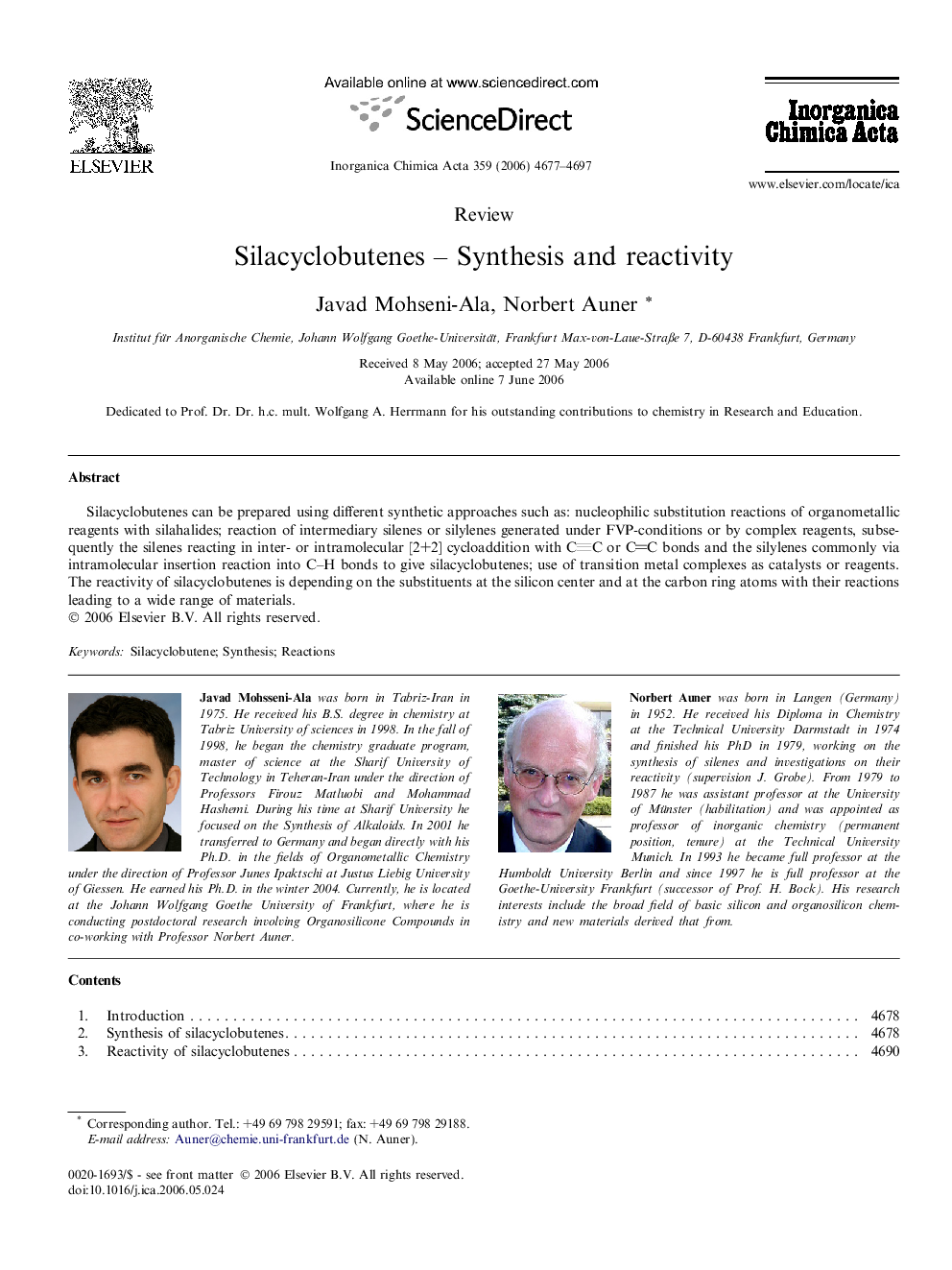| Article ID | Journal | Published Year | Pages | File Type |
|---|---|---|---|---|
| 1310941 | Inorganica Chimica Acta | 2006 | 21 Pages |
Silacyclobutenes can be prepared using different synthetic approaches such as: nucleophilic substitution reactions of organometallic reagents with silahalides; reaction of intermediary silenes or silylenes generated under FVP-conditions or by complex reagents, subsequently the silenes reacting in inter- or intramolecular [2+2] cycloaddition with CC or CC bonds and the silylenes commonly via intramolecular insertion reaction into C–H bonds to give silacyclobutenes; use of transition metal complexes as catalysts or reagents. The reactivity of silacyclobutenes is depending on the substituents at the silicon center and at the carbon ring atoms with their reactions leading to a wide range of materials.
Graphical abstractSilacyclobutenes can be prepared using different synthetic approaches such as: nucleophilic substitution reactions of organometallic reagents with silahalides; reaction of intermediary silenes or silylenes generated under FVP-conditions or by complex reagents, subsequently the silenes reacting in inter- or intramolecular [2+2] cycloaddition with CC or CC bonds and the silylenes commonly via intramolecular insertion reaction into C–H bonds to give silacyclobutenes; use of transition metal complexes as catalysts or reagents. The reactivity of silacyclobutenes is depending on the substituents at the silicon center and at the carbon ring atoms with their reactions leading to a wide range of materials.Figure optionsDownload full-size imageDownload as PowerPoint slide
